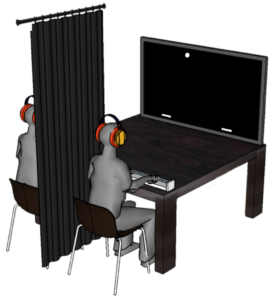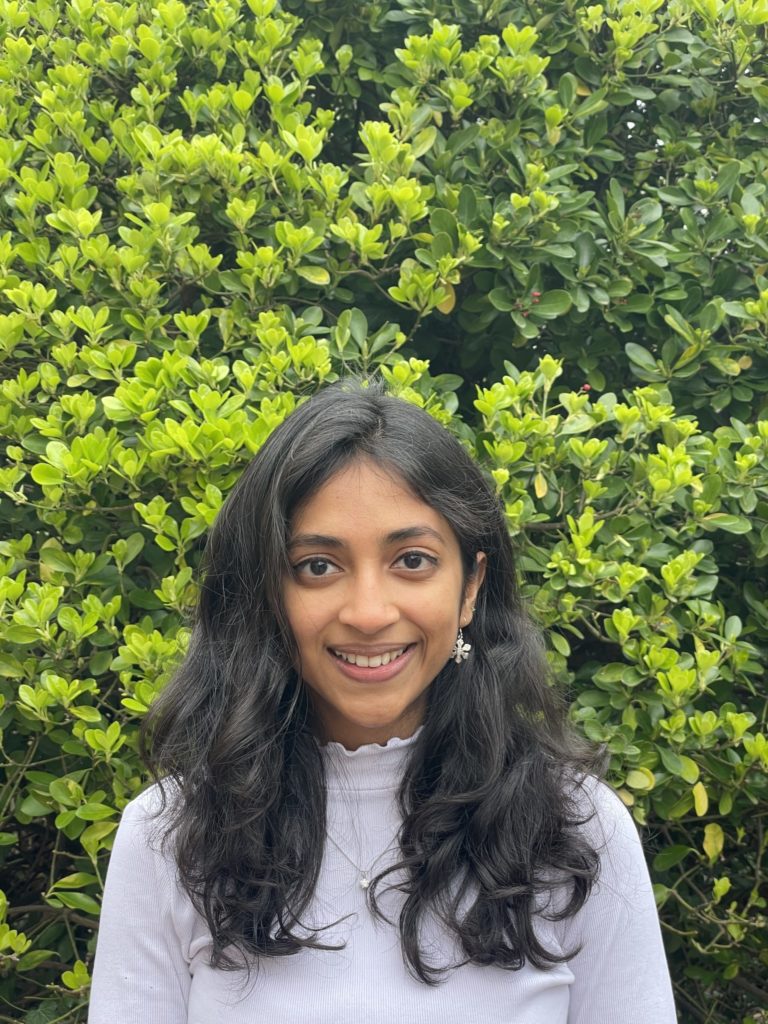ESR project 5
Towards a therapeutic interaction game: the informational coupling in joint interception
Host Institution: University Medical Center Groningen
Department that hosts the PhD: Human Movement Science
Supervisors involved: Dr. Zaal, Prof. dr. Bootsma
Project description
This PhD projects aims at establishing the details of the informational coupling in joint interception in individuals with and without ASD. The project will adopt the doubles-pong task (see below), in which two individuals have to work together to intercept a virtual ball. Previous work suggested that the coupling of the two individuals relates to information specifying interceptability. The project will start with explicitly testing the ability to judge interceptability for oneself and for another, combined with analyses aimed at determining the visual basis for this ability. In the doubles-pong game, both players use an input device to control their on-screen paddles, both moving along a shared interception axis, and the ball needs to be intercepted by only one of the two paddles. By manipulating ball trajectories and player abilities (through manipulating the link between input device and paddle movement), the exact nature of the informational variable specifying interceptability will be unravelled. Next, individuals with ASD will be tested and results of individuals with and without ASD will be compared. Finally, the detailed model of the visual coupling established in this project will be combined with the model for the control in individual interception (Project 6), to arrive at a sophisticated model that will serve to define a doubles-pong game with an artificial agent, that might be used in therapy.
Doubles pong (task employed in Projects 5,6, 7 and 8)

In the doubles-pong task, two individuals have to coordinate their actions in such a way that one of them intercepts an approaching virtual ball. Each player controls a separate paddle that moves along the bottom of a shared computer screen. The ball that falls under an angle from the top of the screen needs to be intercepted by one of the paddles, without the two paddles colliding. Previous research has suggested that the division of interception space by the two players emerges from their interactions rather than being fixed a priori. In the cases that a ball is directed in between the two individuals’ starting positions, both start moving and one player subsequently abandons this movement, presumably when (s)he sees that the other is on an interception course.

About ESR5-Samruddhi Damle
I come from Mumbai, India. I did my BSc in Psychology at Jai Hind College (Mumbai University). I received my MSc in Cognitive Science from the Indian Institute of Technology Gandhinagar (IIT), India. For my MSc thesis, I examined the Role of Emotion in Motor Learning, specifically in Motor Adaptation. I also had the opportunity to do a summer research project at the University of Waterloo, Canada where I studied visual perception using eye-tracking.
I wanted to continue my career in the field of academia, specifically in the Movement Science domain, and the REPAIRS project was a great opportunity for me to do so. My passions include yoga, photography, playing the ukulele (lockdown inspiration!) and painting. I also enjoy nature, travelling, swimming, dancing and cooking, especially with friends. One of my favorite parts of life is to meet and bond with new people, which this project has also provided me with!